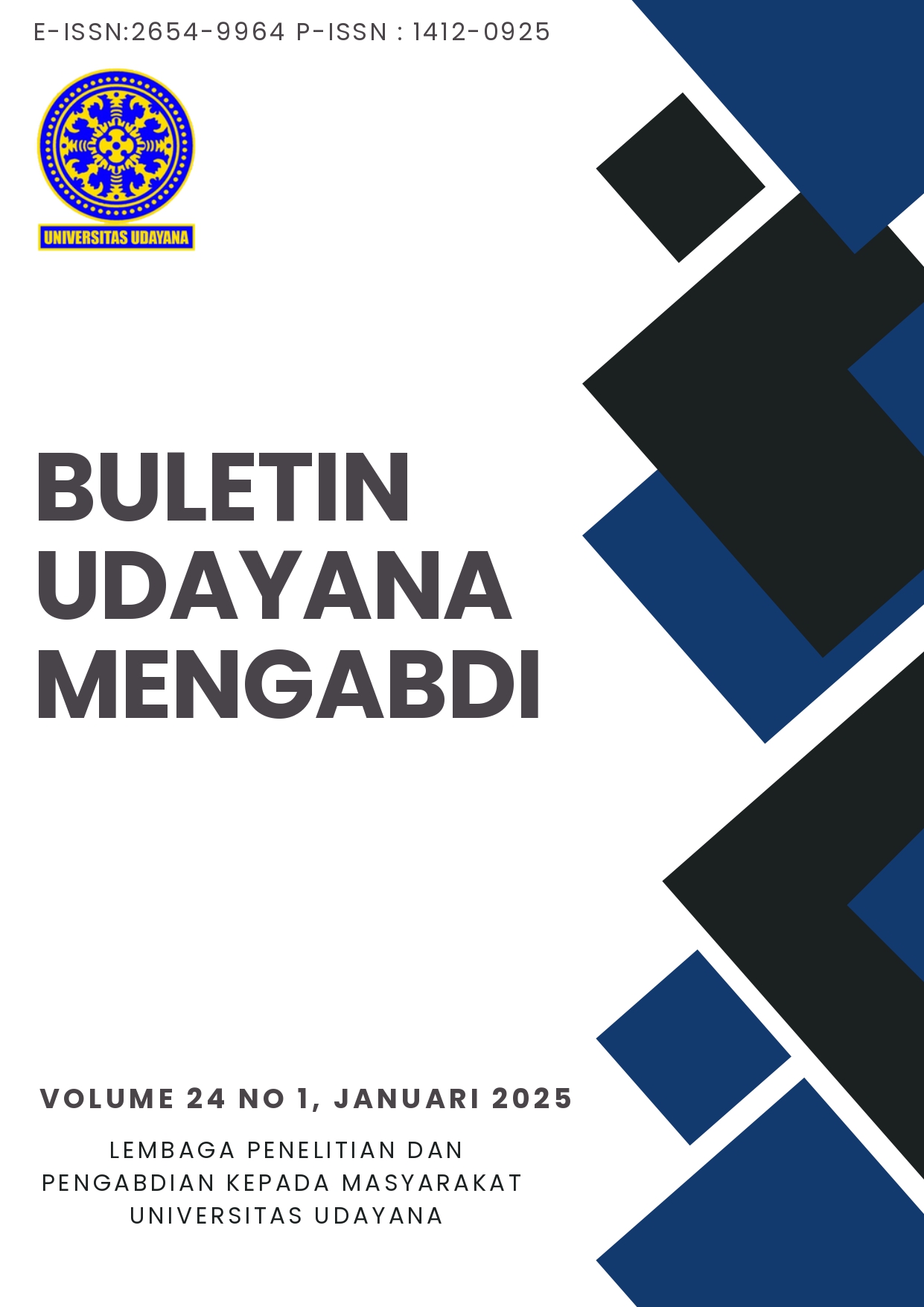PROGRAM PELATIHAN UNTUK MENGATASI GEJALA INTRADIALISIS DAN MEMPERCEPAT PEMULIHAN PASCAHEMODIALISIS
Abstract
Intradialytic symptoms are symptoms or complaints reported by patients during hemodialysis sessions. Generally, more than 85% of patients report experiencing pain like muscle cramps. The presence of intradialytic symptoms can make the patient more tired after hemodialysis and take longer to feel better. As a result, there is a decrease in quality of life and an increased risk of hospitalization. The hemodialysis patient training program is a solution to assist patients in overcoming intradialytic symptoms and accelerating posthemodialysis recovery. The program aims to improve the patient's understanding and ability to cope with intradialytic symptoms and accelerate post-hemodialysis recovery. This program focuses on several aspects, namely increasing patient knowledge, increasing the patient's ability to cope with emerging symptoms, and increasing patient understanding of post-hemodialysis recovery. The implementation method is in the form of providing education and training to overcome intradialytic symptoms. The results showed that there was an increase in the patient's knowledge and ability in symptom management, especially regarding the management of cramps and the patient was able to perform intradialytic exercises. In addition, it was also found that the recovery time after hemodialysis was accelerated and the patient felt more fit. Therefore, training like this is very important to be carried out on an ongoing basis for hemodialysis patients.
Keywords: intradialytic symptom, hemodialysis, training program, recovery time
Downloads
References
Correa, S., Pena-Esparragoza, J. K., Scovner, K. M., & Mc Causland, F. R. (2020). Predictors of Intradialytic Symptoms: An Analysis of Data From the Hemodialysis Study. American journal of kidney diseases : the official journal of the National Kidney Foundation, 76(3), 331–339. https://doi.org/10.1053/j.ajkd.2020.01.004
Elsayed, M.M., Zeid, M.M., Hamza, O.M.R. et al. Dialysis recovery time: associated factors and its association with quality of life of hemodialysis patients. BMC Nephrol 23, 298 (2022). https://doi.org/10.1186/s12882-022-02926-0
Johnson, R. J., Feehally, J., & Floege, J. (2015). Comprehensive clinical nephrology (5th ed.). Philadelphia: Elsevier Saunders
Li, H., Xie, L., Yang, J., & Pang, X. (2018). Symptom burden amongst patients suffering from end-stage renal disease and receiving dialysis: A literature review. International journal of nursing sciences, 5(4), 427–431. https://doi.org/10.1016/j.ijnss.2018.09.010
Msaad, R., Essadik, R., Mohtadi, K., Meftah, H., Lebrazi, H., Taki, H., Kettani, A., Madkouri, G., Ramdani, B., & Saïle, R. (2019). Predictors of mortality in hemodialysis patients. The Pan African Medical Journal, 33, 61. https://doi.org/10.11604/pamj.2019.33.61.18083
Nam, MS., Wong, C.L., Ho, Hui, E.H.S., Miaskowski, C., & So, W.K.W. (2020). Burden of living with multiple concurrent symptoms in patients with end‐stage renal disease. Journal of clinical nursing, 29, 2589-2601. https://doi.org/10.1111/JOCN.15282
Rayner, H. C., Zepel, L., Fuller, D. S., Morgenstern, H., Karaboyas, A., Culleton, B. F., Mapes, D. L., Lopes, A. A., Gillespie, B. W., Hasegawa, T., Saran, R., Tentori, F., Hecking, M., Pisoni, R. L., & Robinson, B. M. (2014). Recovery time, quality of life, and mortality in hemodialysis patients: the Dialysis Outcomes and Practice Patterns Study (DOPPS). American journal of kidney diseases : the official journal of the National Kidney Foundation, 64(1), 86–94. https://doi.org/10.1053/j.ajkd.2014.01.014
Thomas, N. (2014). Renal nursing (4th ed.). United Kingdom: Wiley Blackwell
Zhang, L., Guo, Y., & Ming, H. (2020). Effects of hemodialysis, peritoneal dialysis, and renal transplantation on the quality of life of patients with end-stage renal disease. REV ASSOC MED BRAS, 66(9),1229-1234

This work is licensed under a Creative Commons Attribution-ShareAlike 4.0 International License.

This work is licensed under a Creative Commons Attribution-ShareAlike 4.0 International License.




.png)


1.png) GARUDA - GARBA RUJUKAN DIGITAL
GARUDA - GARBA RUJUKAN DIGITAL



